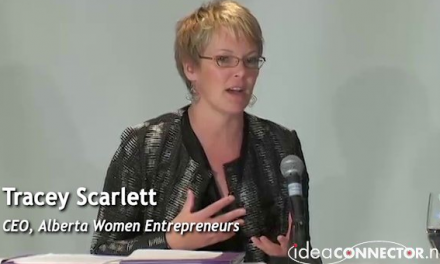By Carol Ann Budd
Maximize the ‘Harvest of your Business by Minimizing’ your Income Taxes. As an entrepreneur, operating your day-to-day business and planning for the future can consume a lot of your time. Paying less tax, although important, may not always be on top of your mind.
There’s no time like the present to ensure you are taking full advantage of all the tax minimization strategies available to you. As you review these key tips, consider how you may be able to apply one or more to yourself and to your business.
Employ your spouse and children
Whether you carry on your business personally or through a corporation, you should consider paying a salary to your spouse and/or children. Canada’s progressive tax system, which assesses higher income earners at higher tax rates, provides an incentive to split income with family members in a lower tax bracket.
Paying a salary to a spouse and/or child who pays tax at a lower rate than you can create net tax savings. But, you must ensure that the salary is reasonable for the services they perform for the business.
Incorporate your business
If your business produces more profit than you need to satisfy your personal cash flow needs, then incorporation could produce a sizeable tax deferral by accessing the lower small business tax rate for active income. This deferral benefit, however, is only available if the profits are left in the company. The longer the profits are left in the company, the larger the tax advantage. It is important to note that investment income earned on prior deferrals and rental income do not receive this lower rate.
The tax deferral achieved through incorporation can create a permanent tax saving if the shares of the business are eventually sold and are eligible for the lifetime capital gains exemption. However, if you are incurring losses this will not be the best option.
Other potential advantages of incorporation include having family members own shares to have access to multiple capital gains exemptions, or paying out dividends to family members who are taxed at a lower rate. Your financial advisor can help determine which strategies work with your situation.
Invest excess cash
Since the biggest bang for your tax buck is accomplished by leaving profits in the company, the question becomes what to do with those profits. If paying down debt or reinvesting in the business operations are not options, then a smart investment plan is your best alternative. This strategy is most effective for active business income subject to the small business deduction
The right investment portfolio for your business.
Plan for your retirement
In order to make the maximum allowable registered retirement savings plan (RRSP) contribution next year, you’ll need to create the contribution room this year by maximizing reported earned income. If incorporated, you will want to review the best dividend/salary mix for your situation. As part of your overall plan, you may also want to make a contribution to your tax-free savings account (TFSA).Talk to your financial advisor about achieving balance in your personal investment plan given all the variables and how it will fit with this year’s maximum contribution limits for business owners.
Don’t forget to think about RRSP contributions when setting and reporting remuneration for services provided by family members who work in the business.
A Corporation with taxable income over the small business limit may want to explore the use of an individual pension plan (IPP). An IPP is ideally suited to business owners in their mid-forties or older who have a past history of earning employment income from their company in excess of $100,000 per year. An IPP will allow you to shelter even more earnings from tax than our RRSP while still offering some protection from creditors.
Prepare for the sale of your business
It’s never too early to plan your business exit strategy. If you’re planning on selling all or part of your business at some point, confirm with your accountant whether you’re eligible for the lifetime capital gain exemption and what steps need to be taken. Look for more information on this topic in the winter issue.
Make use of R&D expenses
Expenses incurred by research and development activities on your products and production processes, may qualify for valuable tax incentives in the form of refundable and non-refundable tax credits. While the guidelines governing program eligibility can be complicated, a wealth of information is available at the Canada Revenue Agency to help you assess your eligibility for the program. Unfortunately, we can’t eliminate taxes. But, we can use wise business practices to maximize the harvest from our business and minimize or defer income taxes that would otherwise be payable. These are only a few of the tax-planning opportunities available to you as a business owner. Talk to your financial planner about a complete tax check-up to help identify all the tax planning strategies available to you. After all, the tactics you employ today will help you reap rewards at tax time next year.
NOTE: This is a general source of information only. It is not intended to provide personalized tax, legal or investment advice, and is not intended as a solicitation to purchase securities. Carol Ann Budd, Consultant with Investors Group Financial Services Inc. is solely responsible for its content. For more information on this topic or any other financial matter, please contact a Chartered Accountant or Certified Financial Planner.
Please, share this article, use button
and add a thought below






Recent Comments